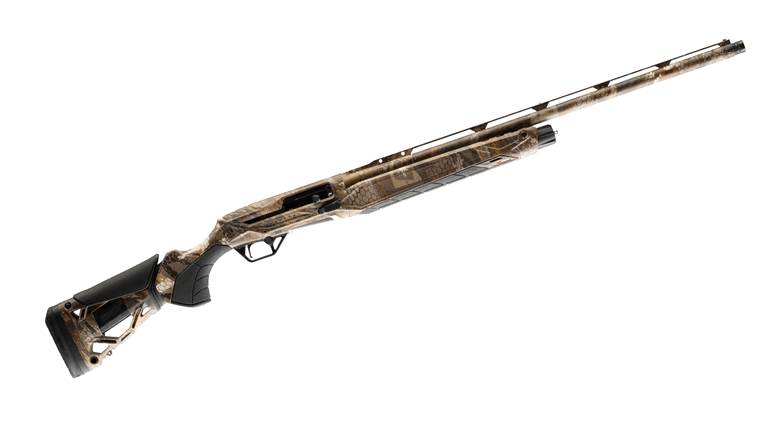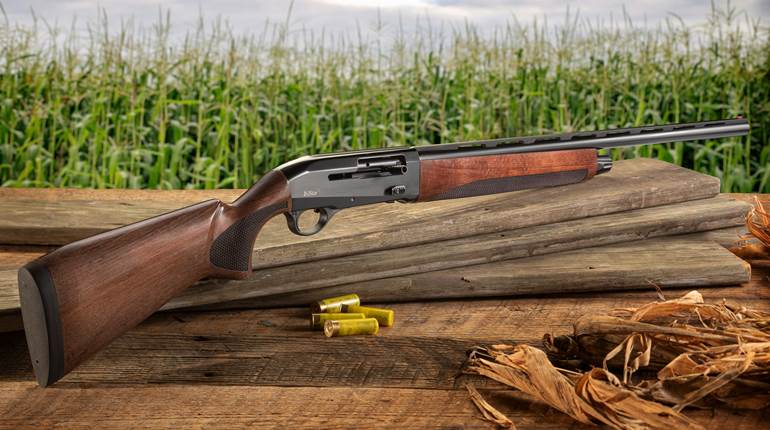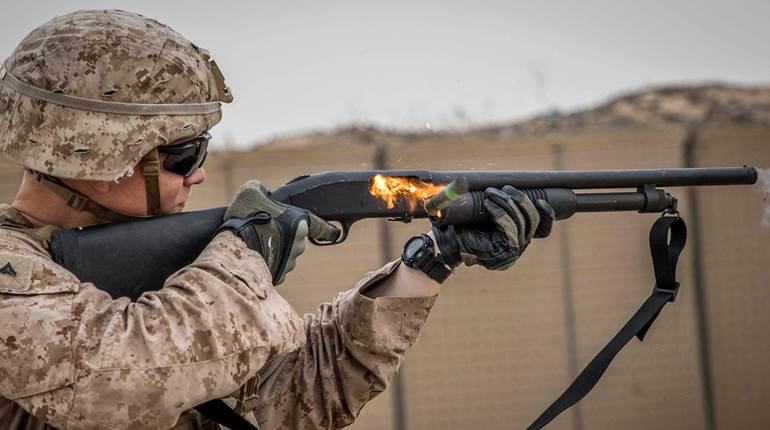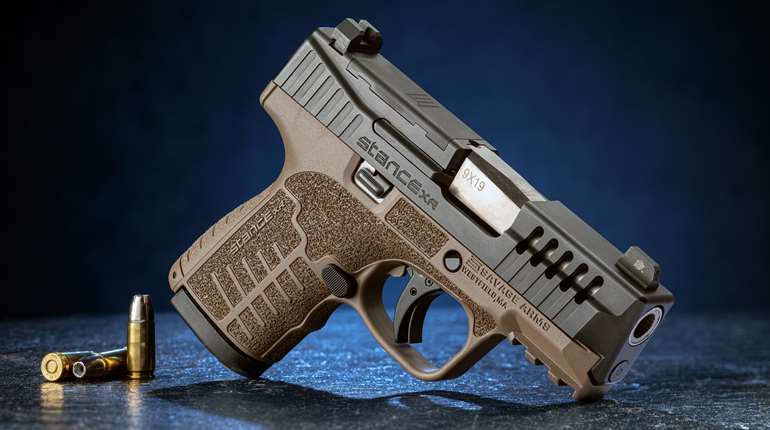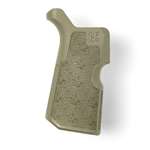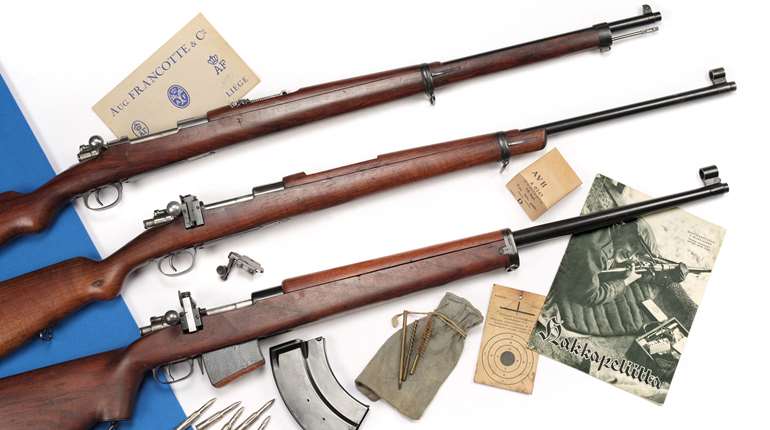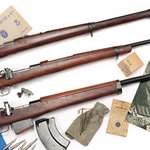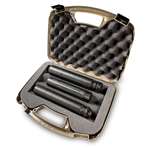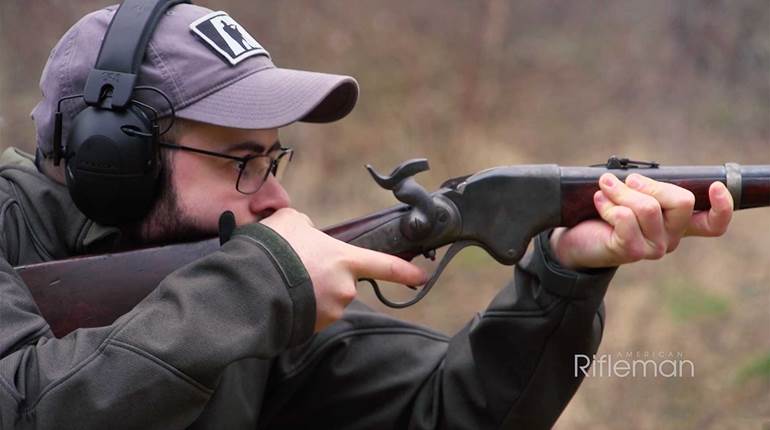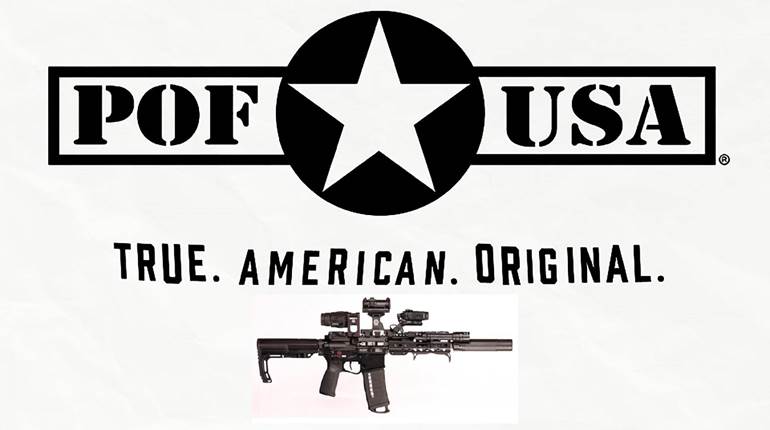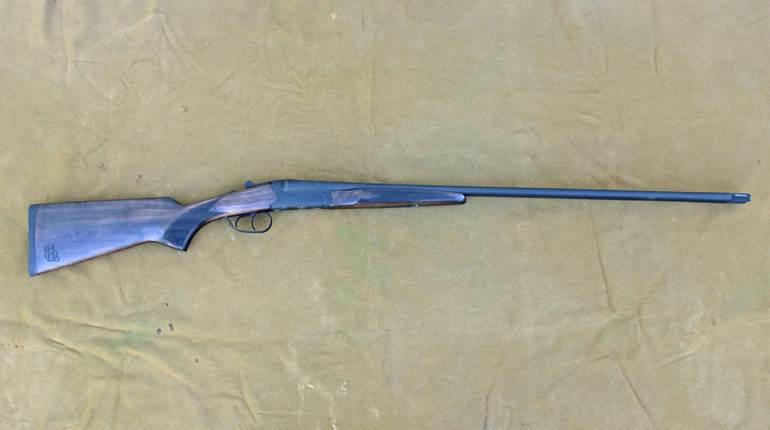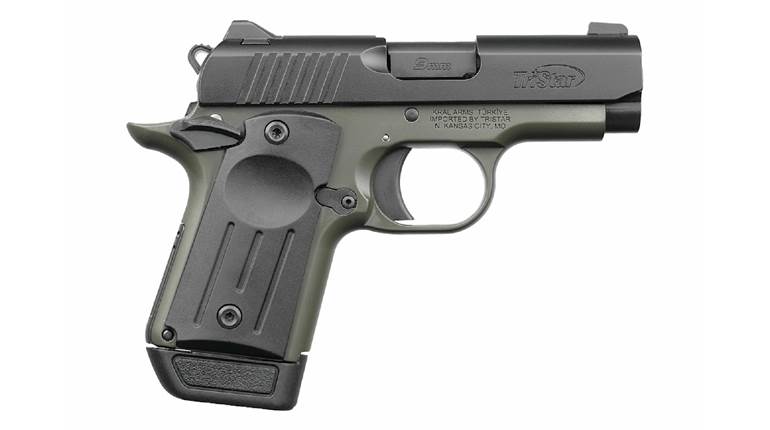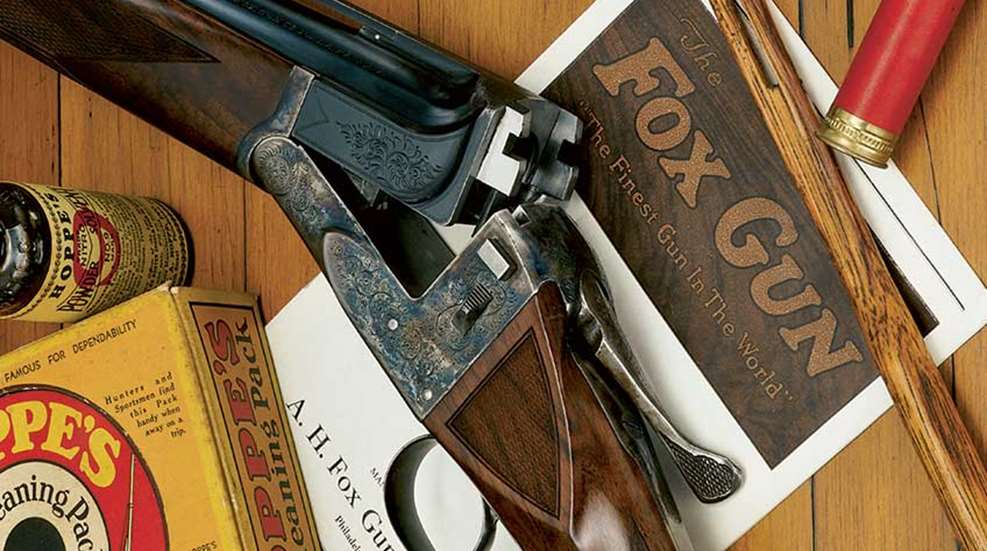
This article, "The Singular Fox," appeared originally in the August 2004 issue of American Rifleman. To subscribe to the magazine, visit the NRA membership page here and select American Rifleman as your member magazine.
From the 1830s, when it was imported to the United States from England, until the turn of the 20th century, trapshooting was a live-bird sport. The passenger pigeon—small, fast, and highly maneuverable—was the target of choice. Wholesale destruction of its habitat combined with annual harvests for the wild-game markets were the prime culprits in the bird’s eventual extinction, but trapshooting must have had at least a minor impact. The Grand American Handicap of 1900 alone accounted for 14,000 birds, and scores of smaller events took place all over the country every week nearly year-round.
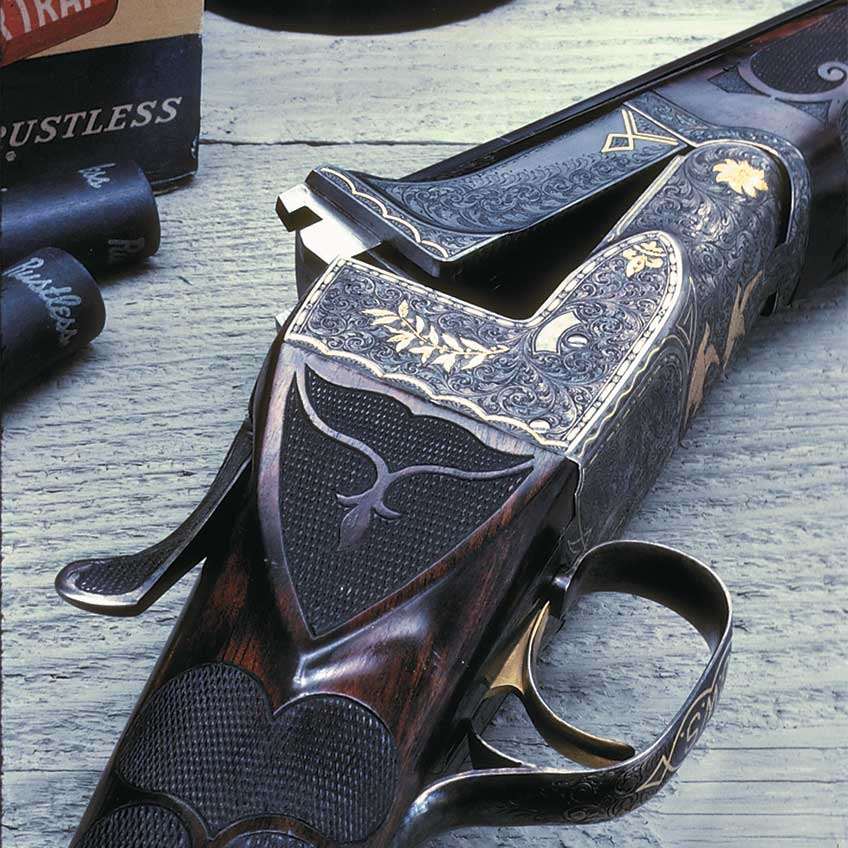
With reliable supplies of pigeons growing ever scarcer at the end of the 19th century, club owners tried all sorts of substitutes—glass balls, sparrows, starlings, even bats—and finally settled upon the domed clay discs invented by the Ligowsky Co. of Chicago. For a while, tournaments often included events at both pigeons and clays, but the passenger’s days clearly were numbered, and 1902 marked the first Grand American Handicap shot entirely at clay targets.
The transition from birds to targets altered both the nature of the game and, eventually, the nature of the gun as well. The rules of pigeon shooting, then as now, allowed two shots at each bird. Double guns naturally were the standard, though a few shooters adopted the pump gun in the last years of the century.
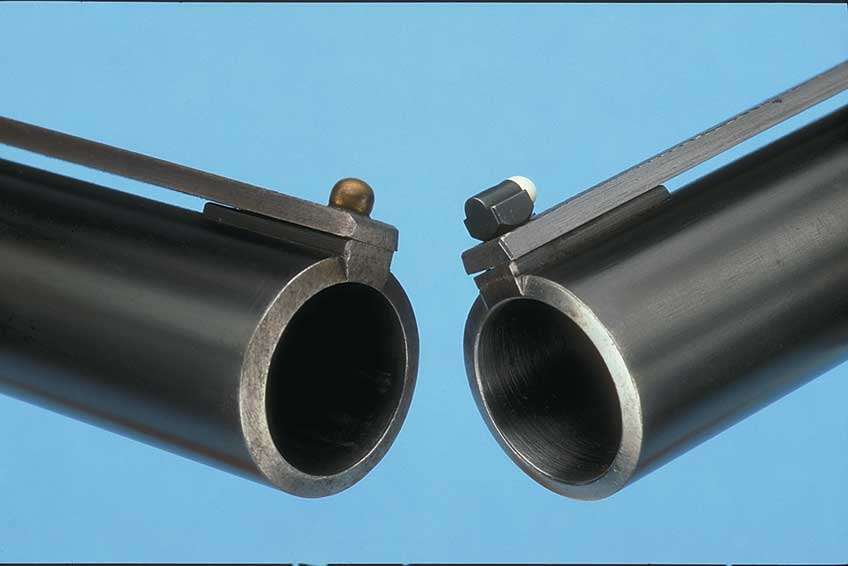
Early on, the governing bodies of the sport decided that clays, especially flung by the relatively low-powered traps of the time, would be more challenging if only one shot were allowed. This made the double gun something of an anomaly, though it remained popular with a certain number of shooters for many years after. The most interesting result of the one-shot rule came in the form of the most highly specialized of all target guns—the break-action single-barrel trap gun.
According to all the evidence, Dan Lefever built the first one made in America, and introduced it in his D.M. Lefever catalog of 1905. Demand clearly was low and production minuscule, somewhere between two dozen and 30 guns, before D.M. Lefever closed down in 1907. The Three Barrel Gun Company of West Virginia built the same gun from 1908 to 1910.
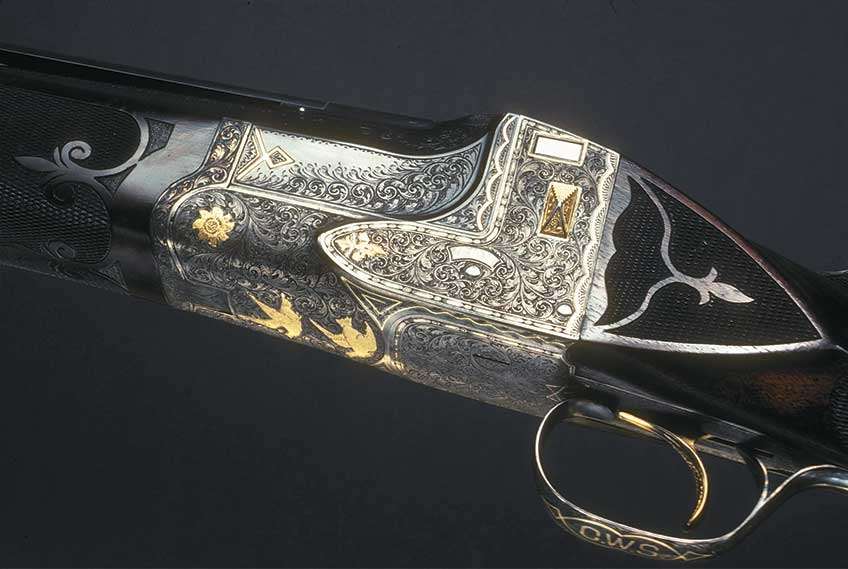
It’s fair to say that Uncle Dan’s single made no appreciable impact upon either trapshooters or the gun industry. The Baker single, introduced in 1909, was the first of its kind to achieve any real success, as the Baker company operated on a well-planned and extensive program of advertising and promotion. Seeing the possibility of offering something new in a fiercely competitive market already suffering from the nation’s economic woes, other makers soon brought out single traps of their own—Ithaca in 1914, both Parker and L.C. Smith in 1917.
It was just the sort of thing that would have tickled Ansley Fox’s fancy—but by then Ansley Fox was no longer a gunmaker. The A.H. Fox Gun Company had gone bankrupt in February 1912, and was purchased from receivership in March by Edward H. and Clarence Godshalk, a father and son who had made a substantial fortune in textiles.
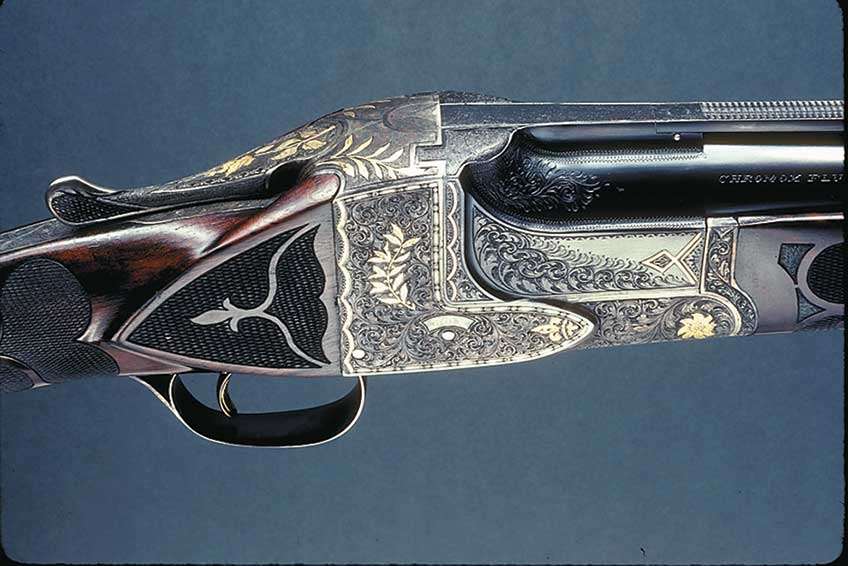
No evidence remains to show whether Ansley Fox had a single trap gun in mind, but the Godshalks clearly did. The earliest design drawings are dated 1914 and 1915, and in November 1914, Clarence Godshalk applied to patent a ventilated rib obviously meant for a single-barrel gun.
Nowadays, we’d call it a “floating rib,” dovetailed but not soldered to the barrel posts so the barrel can expand and contract as it heats and cools without its point of impact being affected by the rib.
Unlike L.C. Smith, the Fox company chose not to adapt its rotary top fastener to the single. Instead, borrowing an idea from W.W. Greener, the Fox fastener is a rectangular cross-bolt in the top of the frame. It extends out from the left-hand side when the action is open and, when closed, engages notches in lumps on either side of the breech. It’s a system relatively easy to machine and fit and allows a shallower frame than any sort of top fastener.
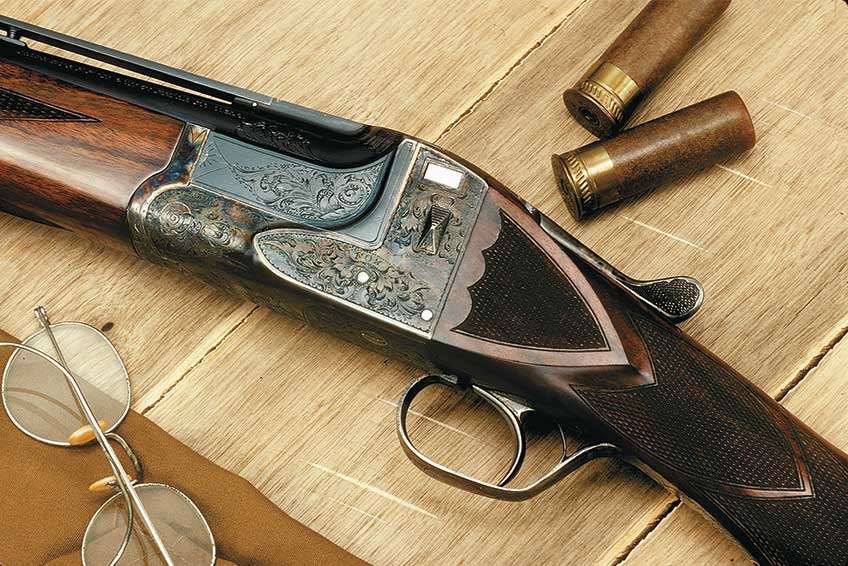
In virtually all American guns, the top lever remains in the open position till the action is closed. If you want to store the gun in a leg’o’mutton or trunk-type case, you have to depress the little plunger that holds the lever open—with a key, the tip of a screwdriver blade or some other sort of tool, even a stick, anything that will fit into the rib-extension slot in the standing breech, where the trip is usually located. Fox put the single-barrel’s trip release on the outside; it’s the little slide button you see on the left-hand side of the frame.
It’s difficult to trace exactly how the design evolved, for I have never seen a Fox single marked with any patent stamp, not even the one for the ventilated rib. But I also have yet to shoot one that didn’t pattern beautifully, so while the Godshalks may have been cavalier about patents, they clearly insisted that barrels get special attention in boring and polishing.
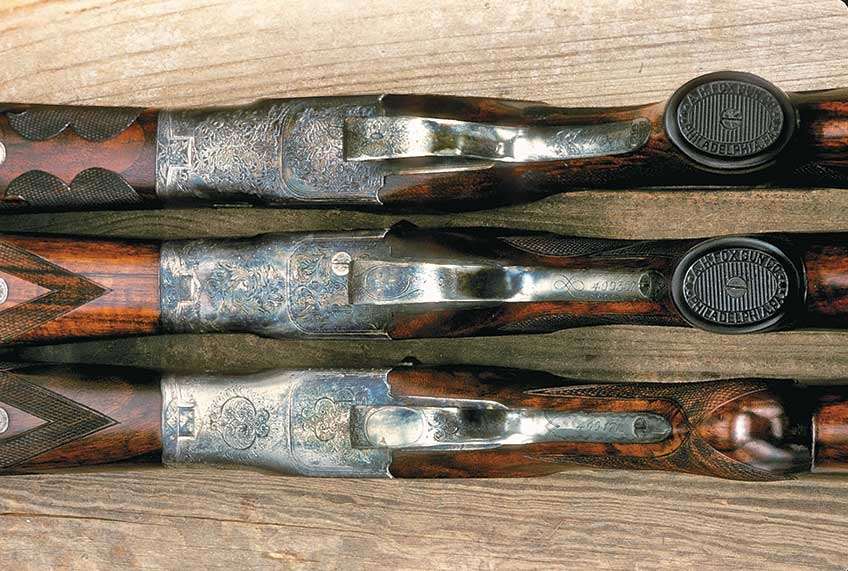
Earliest advertising of the single trap appeared in September 1919. It mentions three grades—J, K and L. The following year, Grade M debuted in advertising and the factory price list. The M would be the highest-grade Fox single of all. In checkering and decoration patterns, the four roughly correspond to the CE, XE, DE and FE grades of Fox doubles, though the L Grade is engraved in a vine, leaf and flower pattern that never appeared on any other Fox gun. It is, however, quite similar to the decoration of the first Parker A-1 Special, which I believe was designed and executed by William H. Gough—who just happened to be chief engraver at A.H. Fox after 1910.
The singles, of course, were built in 12 gauge only, with the option of a 30” or 32” barrel. Thirty-two inches was standard, and the records show only 23 guns ordered with 30” barrels. Given the incomplete state of Fox records, there may have been a few more, but probably not many. Stocks could be straight-hand, half-hand or full pistol, and could be carved with a Monte Carlo comb. (After 1930, Savage Arms, then owner of the Fox company, made the Monte Carlo standard.)
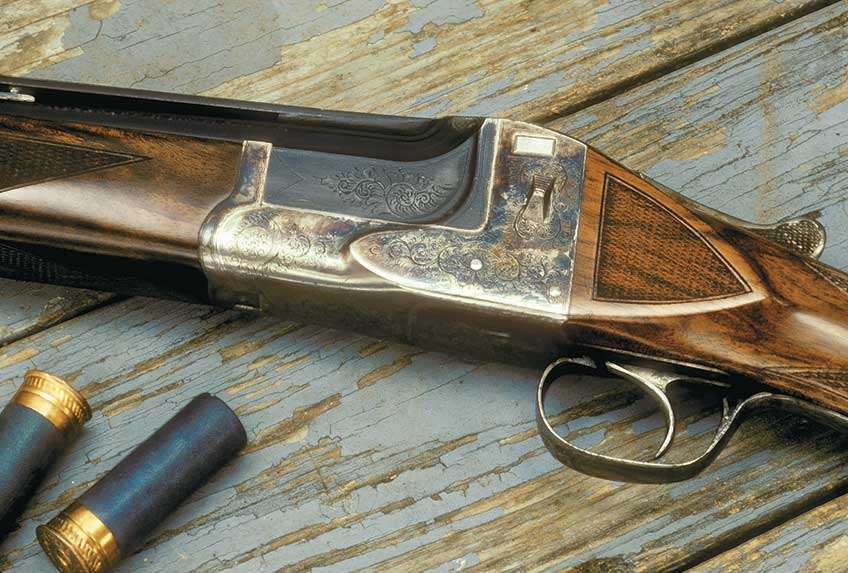
The first single, a J Grade, left the factory in July 1919, the first L Grade went out in August, the first K Grade in September. Altogether, 59 singles were shipped out during 1919. The first M Grade (which is the gun pictured) didn’t go until April 1921—not surprising, as the market for $500 single traps must have been pretty thin. In fact, the records specifically document only nine M Grades ever built.
The Fox was the last of the old-time American singles to appear on the market, and the other makers had enough head start that Fox never did achieve the popularity it deserved. Its best year was 1923, when the factory shipped a total of 71 guns; 10 years later, with the Depression tightening like a vise, the total was one.
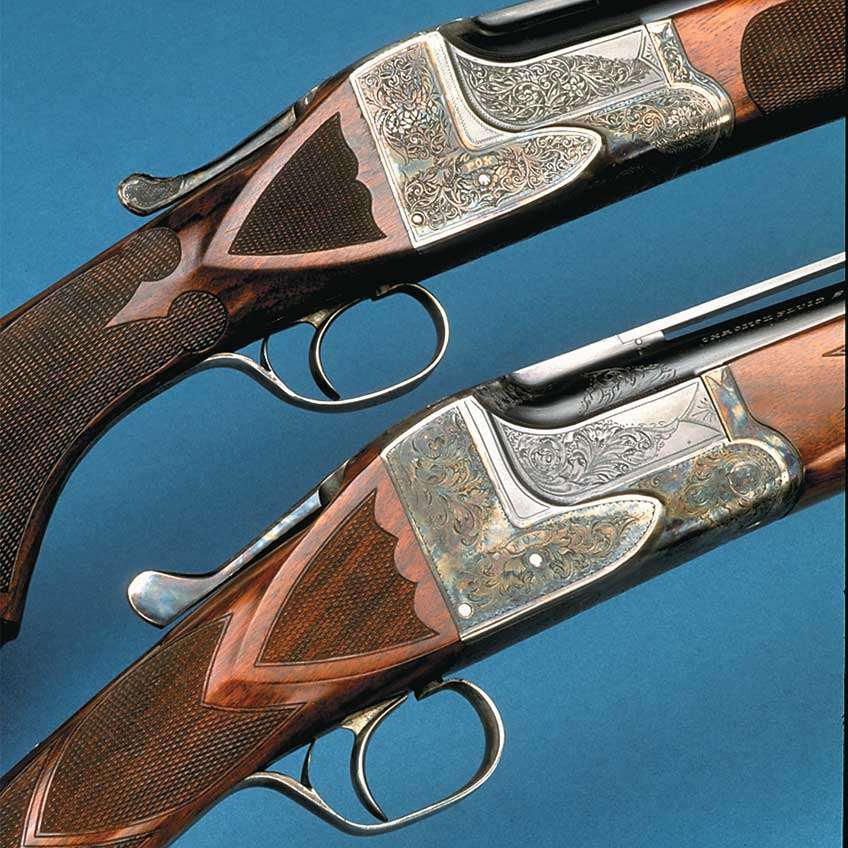
The shipping records, which are about all that’s left for factory documentation, indicate 571 single trap guns sent: 410 J Grades, 75 K Grades, 25 L Grades, 9 Ms, and 52 unidentified. Only 36 of these were shipped between 1930, when Savage Arms purchased the A.H. Fox Gun Company, and 1936, when the curtain came down for the final time.
In the grips of hard times, single trap guns were simply too specialized to find a broad market. Savage Arms made heroic efforts to find a marketing angle that would work. A little three-panel brochure issued about 1931 announced “The New Fox Trap Guns.” It says, “The frame of the New Fox Single Barrel Trap Gun has been redesigned to a form which extends the top rib line back across the frame to the shooter’s eyes, insuring perfect alignment in sighting. The standard stock is full pistol grip, Monte Carlo style.”
A good effort but not as extensive a “redesign” as it sounds. The factory added a matted band, the same width as the rib, across the top of the frame. This extends the rib line, but that’s all it amounts to. It does, however, help distinguish Savage-era singles from those made in Philadelphia.
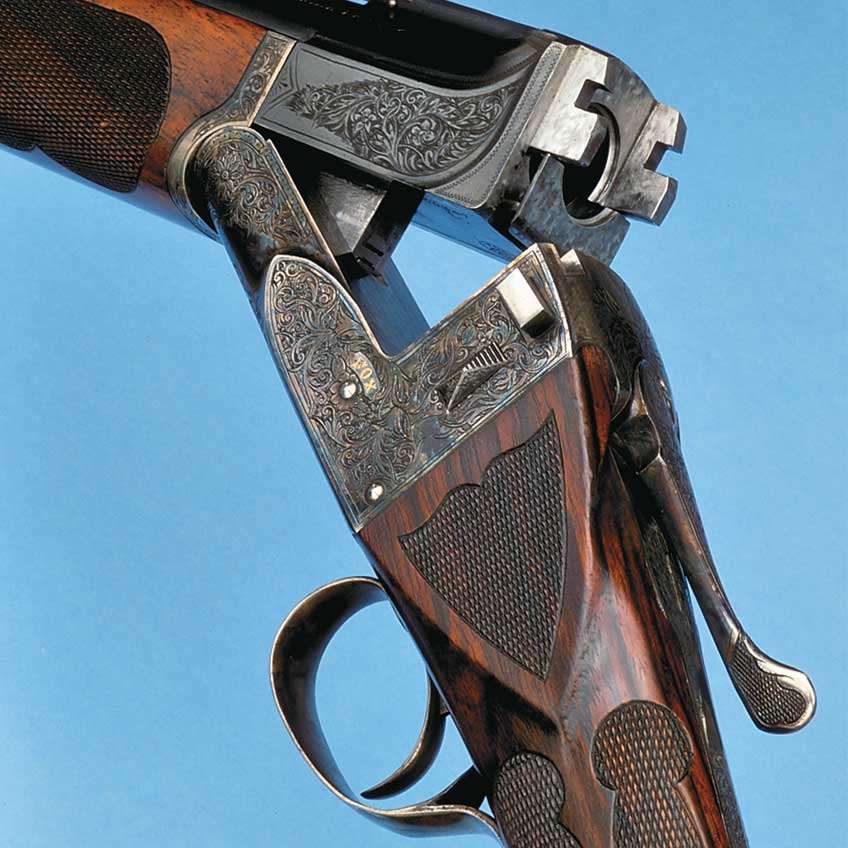
It certainly wasn’t enough to lure customers—and Savage had either to lure customers or go out of business. The company didn’t offer K and L grades after 1934 or the M Grade after 1936. By then it was anticlimactic. The last K and L grades were shipped in December 1931, the last M in June 1932. Savage did maintain the J Grade as a catalogue item until 1939, but the last one actually shipped went out in January 1936.
A pity, really, that the Fox single never caught on. For quality of design, manufacture, finish and decoration, it was as good as any made in America—and in its lovely trigger and expertly bored and regulated barrel, better than some.
In fact, the singles in some ways offered better value than the Fox doubles of corresponding grade. With fewer than 600 built, finding enough Fox singles from which to draw comparative conclusions requires diligent searching—but if you can look at enough of them, and enough doubles of similar grade, you’ll be struck by the differences.
Recall that the J, K, L and M singles are basically comparable to the CE, XE, DE and FE doubles. Compare enough actual specimens and you’ll see that Fox generally stocked the singles with better-quality wood. Checkering and engraving are similarly a bit more precisely executed. And as I mentioned, the L Grade engraving pattern is unique among Foxes, being much more elaborate than the standard DE double.
My pal Bill Headrick—whose photographs here are enough to make you drool, and who has seen as many Foxes as anyone—agrees: “It would seem that Fox, perhaps realizing that the customer was getting only one barrel and one lock, went out of its way to provide full value. In my opinion, the singles are in a class by themselves in this regard.”
But for the vagaries of economics and fashion, I have a notion that if they all had started on a level field, the Fox would have fared perfectly well in the market against the rest, even the justly famous Ithaca Knick.
I stopped shooting trap, for a variety of reasons, almost 25 years ago. In the latter years, nothing felt as good to me as a single-barrel, and if I ever took up the game again, I’d search around till I found a Fox I could buy. It would take some doing, but I’d consider it worth the effort. After all, any way you look at it, the A.H. Fox trap gun is a singular achievement.












